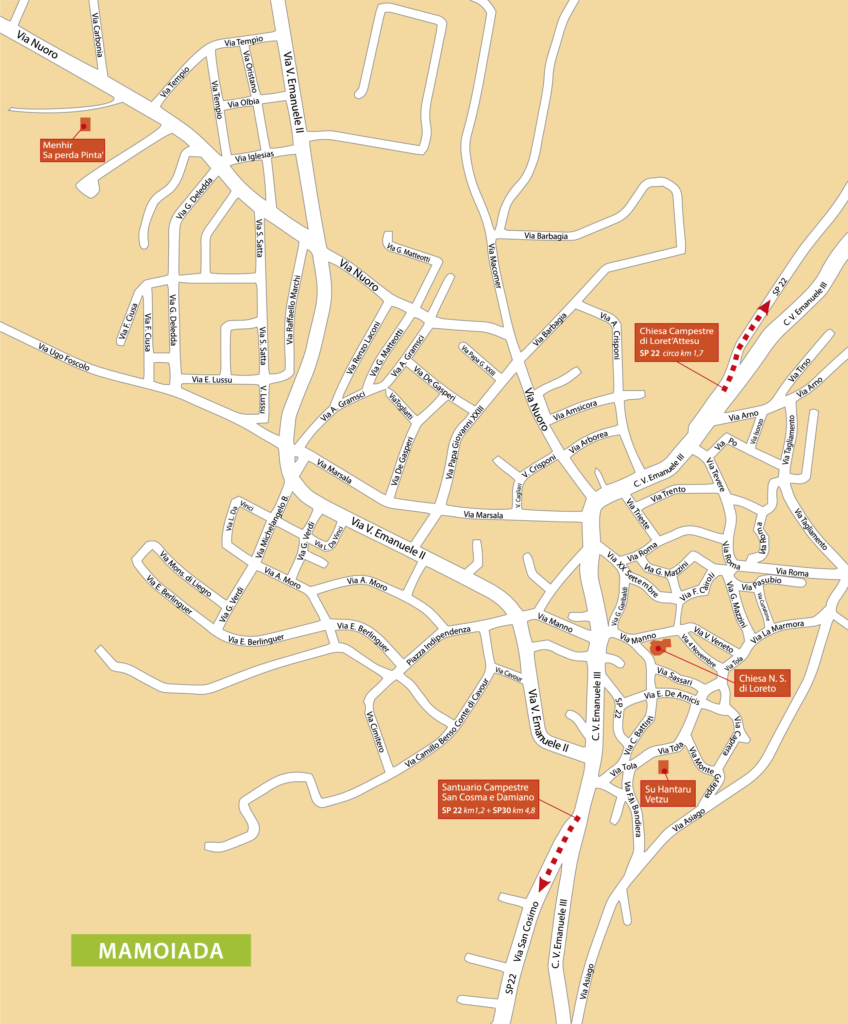Menhir Sa perda Pintà
Sa Perda Pintà – also called the ‘Boeli Stone’ (Stele di Boeli) after the name of the place in which it was found – was uncovered by chance in 1996 just outside the town of Mamoiada. Since ceramic fragments with the typical decoration of the Ozieri culture (3200-1800 BC) were found in the surrounding area, the stone is believed to date back to this period. Originally thought to be a menhir, Sa Perda Pintà is 2.67 m high, 1.30 to 2.10 m wide, and 0.57 m thick, with a flat-concave section and a rounded top. The two main sides of the stone are clean and well-preserved, due to it being buried for so long. The front is richly decorated and features a series of engraved concentric circles (from a minimum of two to a maximum of seven) surrounding a cup-mark (with a diameter of 4/5 cm and a depth of 0.8 cm). The pattern is crossed by another linear channel leading out from the middle. There are also 23 cup marks of varying size, which are concentrated in the upper and in the lower-left corner of the stone: here you can see seven of them arranged in a semicircle around one of the concentric circles crossed by a linear channel.
Sa Perda Pintà was thought to be the only one of its kind, until other four slabs were discovered in the localities of Garaunele, S’Ena Manna and Su Rosariu: despite being very similar and appearing to belong to the same cultural milieu, these artefacts are not as well preserved and are different from a technical, formal and iconographic point of view. The monolith was regarded as sacred, as evidenced from the nearby presence of menhirs, domus de janas and dolmens as well as highly populated villages. It seems it was made for the living rather than the dead, therefore it was not involved in magical and mysterious rites: the markings on it are associated with fertility rituals and mother goddess cults, which were extremely important to Neolithic cultures. Due to their shape, resembling the waves generated by a stone or a stick when it hits the water, these engravings may also be associated with the ancient cult of water.
The comparison with other artefacts discovered outside of Sardinia allowed to draw an analogy with historical and cultural events involving engraved megalithic stones in countries such as Scotland, Ireland, Britain, Switzerland, Spain, and Portugal.
Text by Cecilia Mariani
 BIM TALORO
BIM TALORO 